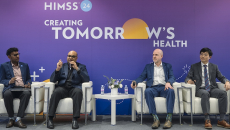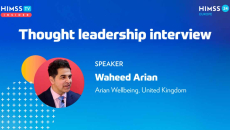Patient Engagement
Emteq Labs launches its emotion-sensing eyewear, Sense, which collects and records real-world data on a wearer’s facial expressions. Steen Strand, CEO, talks about the glasses' potential use cases for healthcare.
Remote Patient Monitoring
MD Home Health CEO explains why the organization embraced the four-pronged, technology-infused style of home health and how the approach should streamline delivery and improve patient outcomes.
HIMSS24 APAC
Started amid the recent pandemic, smart hospitals are now being expanded nationwide.
That's the view of a tech CEO who discusses problems with the patient experience and what may happen if hospitals and health systems embrace digital tools on the patient-facing side.
HIMSS24 APAC
APAC health system leaders reveal best practices in EMR implementation.
Patients have always been at the top of mind of Samsung Medical Center and its digitalisation agenda, shares CTO Jong-Soo Choi.
Dr. Waheed Arian, NHS physician and Arian Wellbeing's founder, discusses how his experiences as an Afghan refugee helped shape the company’s adaptable, trauma-informed approach to behavioral healthcare.
Josh Wymer, chief health information and data strategy officer at the Missouri Department of Health and Senior Services, discusses a genAI chatbot the state uses and the value of both trust and data transparency in public and community health.
SPONSORED
Get insights into use cases for AI – and challenges to its adoption.
After a federal court ruled that healthcare organizations sharing individual IP addresses with third parties did not constitute a HIPAA breach, legal ambiguity remains, says one privacy expert.










